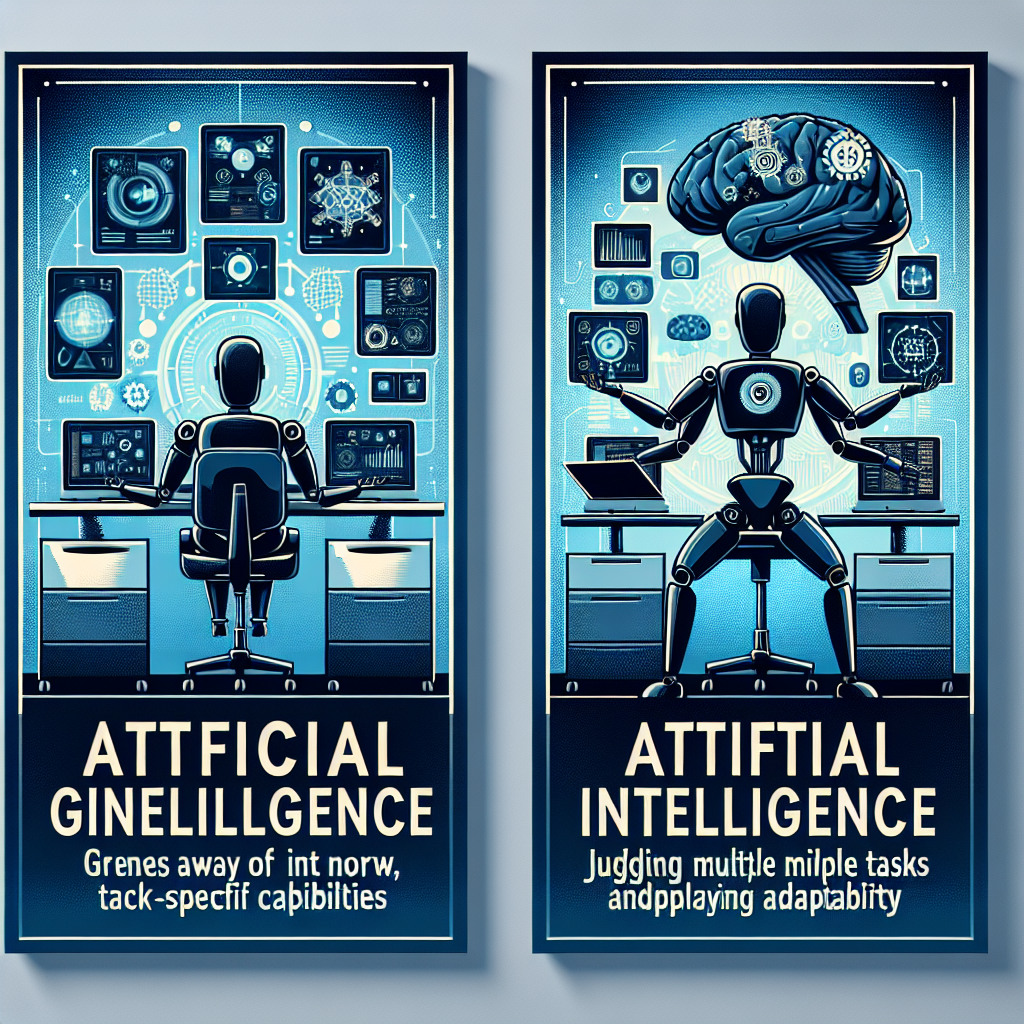Artificial General Intelligence (AGI) and Artificial Intelligence (AI) are two terms that are often used interchangeably, but they actually refer to different concepts in the field of technology and computer science. Understanding the key differences between AGI and AI is crucial for businesses and individuals looking to implement these technologies in their operations.
AGI vs. AI: What’s the Difference?
Artificial General Intelligence (AGI) refers to a type of artificial intelligence that possesses the ability to understand, learn, and apply knowledge in a wide range of tasks and domains. AGI systems are designed to mimic human intelligence and are capable of performing a variety of cognitive tasks that require reasoning, problem-solving, and decision-making abilities. AGI systems are often referred to as “strong AI” because they have the potential to exhibit human-like intelligence across different tasks and scenarios.
On the other hand, Artificial Intelligence (AI) is a broader term that encompasses a wide range of technologies and techniques that enable machines to perform tasks that typically require human intelligence. AI systems can be categorized into two main types: narrow AI and general AI. Narrow AI refers to systems that are designed to perform specific tasks or functions, such as speech recognition, image recognition, or natural language processing. General AI, on the other hand, refers to systems that have the ability to perform a wide range of tasks and exhibit human-like intelligence.
The key difference between AGI and AI lies in their capabilities and scope. While AI systems are designed to perform specific tasks or functions within a limited domain, AGI systems have the potential to exhibit human-like intelligence across different tasks and domains. AGI systems are more flexible, adaptable, and capable of learning new tasks and skills on their own, whereas AI systems are limited to the tasks they are programmed to perform.
FAQs
Q: What are some examples of AGI systems?
A: There are currently no commercially available AGI systems, as the technology is still in its early stages of development. However, some researchers and companies are working on developing AGI systems that have the potential to exhibit human-like intelligence across different tasks and domains.
Q: How is AGI different from human intelligence?
A: While AGI systems are designed to mimic human intelligence and perform cognitive tasks, they are still limited in their capabilities compared to human intelligence. AGI systems lack the emotional intelligence, creativity, and intuition that humans possess, which makes them less adept at certain tasks that require a deep understanding of complex social and emotional cues.
Q: What are the ethical implications of AGI?
A: The development of AGI raises a number of ethical concerns, including issues related to privacy, security, bias, and accountability. As AGI systems become more advanced and capable of performing a wide range of tasks, it is important for researchers, developers, and policymakers to address these ethical concerns and ensure that AGI technology is used responsibly and ethically.
Q: How can businesses benefit from AGI technology?
A: AGI technology has the potential to revolutionize a wide range of industries, including healthcare, finance, manufacturing, and transportation. Businesses can benefit from AGI technology by improving efficiency, reducing costs, enhancing decision-making, and creating new opportunities for innovation and growth. By harnessing the power of AGI technology, businesses can gain a competitive edge and drive long-term success in the digital age.
In conclusion, AGI and AI are two distinct concepts in the field of technology and computer science, each with its own capabilities and limitations. While AI systems are designed to perform specific tasks within a limited domain, AGI systems have the potential to exhibit human-like intelligence across different tasks and domains. Understanding the key differences between AGI and AI is essential for businesses and individuals looking to leverage these technologies in their operations and drive innovation in the digital age.

